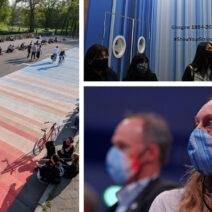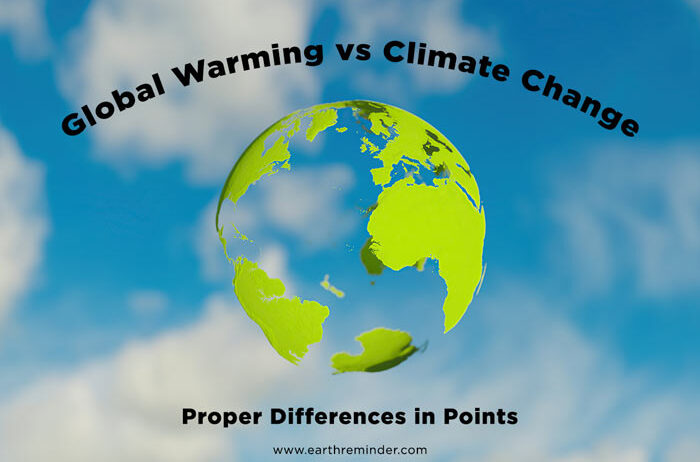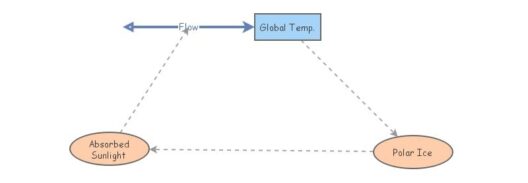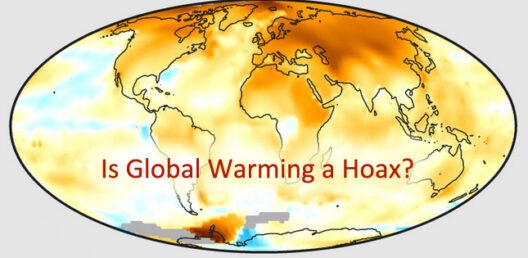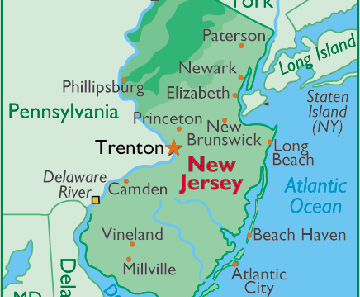In contemporary discourse surrounding environmental issues, the terms “climate change” and “global warming” are often used interchangeably, leading to confusion among the public. While both phenomena are fundamentally interconnected, they denote distinct aspects of environmental transformation. This article endeavors to elucidate the key differences between climate change and global warming, affording a comprehensive understanding of each concept and their implications for our planet.
At the most basic level, global warming refers to the long-term ascendance in Earth’s average surface temperature, primarily attributable to the accumulation of greenhouse gases like carbon dioxide (CO2) and methane (CH4) in the atmosphere. This accumulation is chiefly the result of anthropogenic activities, such as fossil fuel combustion, deforestation, and industrial processes. In contrast, climate change encompasses a broader spectrum of alterations in climate patterns, including not only temperature increases but also shifts in precipitation, storm intensity, and the frequency of extreme weather events. Thus, while global warming represents a specific phenomenon, climate change serves as an overarching term encapsulating a variety of climatic shifts.
Understanding the ramifications of global warming is pivotal to grasping the broader narrative of climate change. The incremental rise in temperature has several repercussions on both local and global scales. For instance, as global temperatures rise, polar ice caps and glaciers are steadily melting, contributing to rising sea levels. This phenomenon poses a significant threat to coastal communities worldwide, amplifying the risk of flooding and erosion. Moreover, warmer temperatures contribute to alterations in ecosystems, adversely affecting biodiversity. Species that cannot adapt to these changes may face extinction, leading to a ripple effect throughout the food chain.
Conversely, climate change is characterized by its complexity and multifaceted nature. It encompasses various factors, including alterations in weather patterns, the occurrence of droughts, storms, and changes in oceanic currents. Such variability can lead to dire consequences for agriculture, water resources, and human health. For example, an uptick in extreme weather events, such as hurricanes or heatwaves, can devastate communities and exacerbate existing inequalities. Vulnerable populations are often the hardest hit, sometimes lacking the resources to adapt or recover from such impacts.
Interestingly, the distinction between global warming and climate change can also be reflected in public perception and policy. Global warming, with its emphasis on rising temperatures, appears less abstract and more tangible to the average individual. It invites a visceral reaction—a direct acknowledgment of our warming planet. Climate change, on the other hand, often seems nebulous and distant, as its implications unfold over longer timescales and manifest in varied forms. This disparity can influence how individuals and policymakers prioritize actions to mitigate environmental degradation.
The conflation of climate change with global warming can also be traced to the rhetoric employed by various stakeholders. Environmental activists, for instance, frequently highlight warming trends as a clarion call for urgent action, focusing on tangible evidence of climate change, such as melting ice caps and catastrophic weather events. In this context, global warming acts as a critical point of entry for broader discussions about climate justice, sustainability, and adaptation strategies.
It is imperative to recognize that while global warming is a significant driver of climate change, it is not the sole contributor. Natural factors continue to influence climate variability, including volcanic eruptions, solar radiation fluctuations, and ocean circulation dynamics. Furthermore, anthropogenic factors—such as land-use changes and deforestation—are equally influential, modifying local climates and exacerbating natural climate variability. This complexity underscores the critical need for interdisciplinary approaches that integrate environmental science, policy-making, and community engagement.
In addressing the multifaceted challenges posed by both climate change and global warming, a concerted global response is essential. Policies aimed at reducing greenhouse gas emissions, transitioning to renewable energy sources, and fostering climate resilience in vulnerable communities are pivotal. Moreover, public education plays a critical role in demystifying these concepts, equipping individuals with the knowledge necessary to advocate for meaningful change.
Ultimately, the differences between climate change and global warming highlight the intricate interplay of natural and human influences on our planet’s systems. While global warming serves as a critical indicator of our changing climate, climate change embodies the broader ramifications of these shifts on ecosystems, human health, and economic stability. Recognizing the intricacies of these terms is vital for anyone engaging in discourse about environmental sustainability and the urgent actions required to protect our planet for future generations.
In conclusion, the distinction between climate change and global warming is not merely semantic; it underscores the complexity of our planet’s systems and the immediate need for action. As stewards of the Earth, it is incumbent upon us to foster a deeper understanding of these phenomena, encouraging proactive engagement in the quest for sustainable solutions that harmonize human activity with the well-being of our environment.
